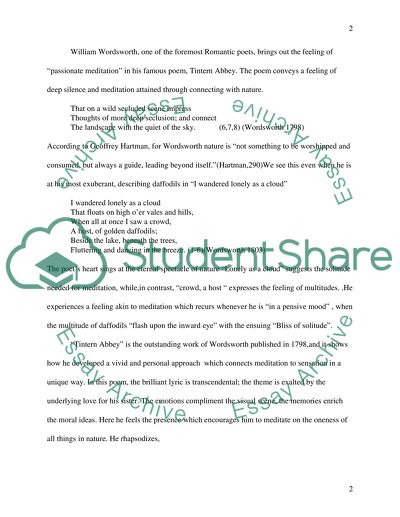Cite this document
(Nature and Meditation in Romantic Poetry Essay Example | Topics and Well Written Essays - 2000 words, n.d.)
Nature and Meditation in Romantic Poetry Essay Example | Topics and Well Written Essays - 2000 words. https://studentshare.org/literature/1530431-nature-and-meditation-in-romantic-poetry
Nature and Meditation in Romantic Poetry Essay Example | Topics and Well Written Essays - 2000 words. https://studentshare.org/literature/1530431-nature-and-meditation-in-romantic-poetry
(Nature and Meditation in Romantic Poetry Essay Example | Topics and Well Written Essays - 2000 Words)
Nature and Meditation in Romantic Poetry Essay Example | Topics and Well Written Essays - 2000 Words. https://studentshare.org/literature/1530431-nature-and-meditation-in-romantic-poetry.
Nature and Meditation in Romantic Poetry Essay Example | Topics and Well Written Essays - 2000 Words. https://studentshare.org/literature/1530431-nature-and-meditation-in-romantic-poetry.
“Nature and Meditation in Romantic Poetry Essay Example | Topics and Well Written Essays - 2000 Words”. https://studentshare.org/literature/1530431-nature-and-meditation-in-romantic-poetry.


